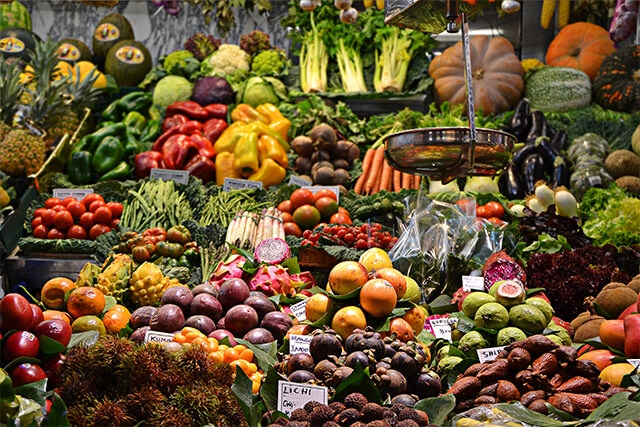
By now, you know that 2020 On-site is all about eye health, especially eye care in the workplace. But we’re not always at work, and we’re all eating (at least) 3 meals a day. So in the spirit of general eye health information, and because we got a little bit hungry, we started thinking about how (and what) we can eat to keep our eyes healthy.
You’ve probably heard the saying, “you eat with your eyes first”--meaning that if something looks appetizing to you, you’re more likely to want to consume it. Of course, we use all of our senses, not just our eyes, when it comes to food--we consider how it smells, tastes, its “mouth feel” (a term used by food pros but we all understand what it means.) Even how it sounds as it’s cooking--think of the sizzle of a steak on the grill. Maybe your mouth is watering already.
We eat FOR our eyes, too--or, to be more specific, we should be eating for eye health. Parents all over the country talk up the value of carrots and the Vitamin A they contain--and they’re right--but that’s just the beginning. Certain nutrients boost eye health, and can prevent some eye diseases.
You already know that eating right is the way to keep your heart healthy. The good news is that the same diet that helps your heart is also good for your eyes. A diet low in fat and rich in fruits, vegetables and whole grains is what to aim for, for the heart and the eyes. Since your eyes rely on tiny arteries for oxygen and nutrients, just as the heart relies on much larger arteries, this makes sense. Keeping those arteries healthy will also help your eyes.
It’s not hard to get eye-friendly foods into your diet. The American Optometric Association recommends the following nutrients and antioxidants--as essential for improving eye health.
6 CRITICAL EYE NUTRIENTS AND WHERE TO FIND THEM
1. Lutein and Zeaxanthin (no, we can’t pronounce it either) are found in green leafy vegetables and eggs. Many studies show that lutein and zeaxanthin reduce the risk of chronic eye diseases, including age-related macular degeneration (AMD) and cataracts. One large study showed that women who had diets high in lutein were 23 percent less likely to develop cataracts than women whose diets were low in this nutrient.
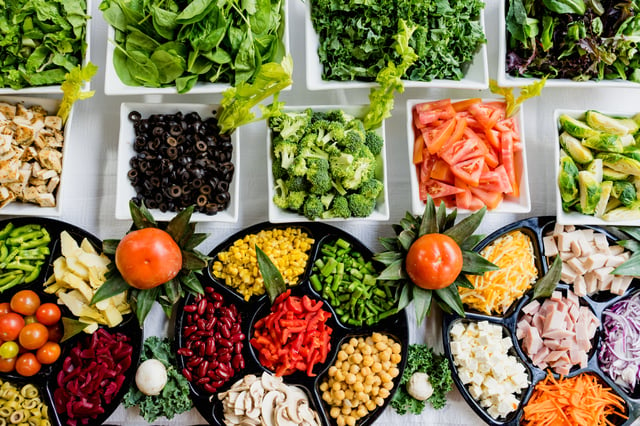
For lutein and zeaxanthin, think spinach, kale, collard greens, broccoli, and brightly-colored fruits like kiwis and grapes. Other dark leafy green vegetables, like spinach, romaine lettuce, peas, corn, collards and turnip greens, also contain significant amounts of lutein and zeaxanthin.
2. Vitamin C is found in fruits and vegetables. Evidence suggests that vitamin C lowers the risk of developing cataracts. Also, when taken in combination with the other essential nutrients, Vitamin C can slow the progression of age-related syndromes, including macular degeneration and visual acuity loss. Scientists have found that your eyes need relatively high levels of vitamin C to function properly.
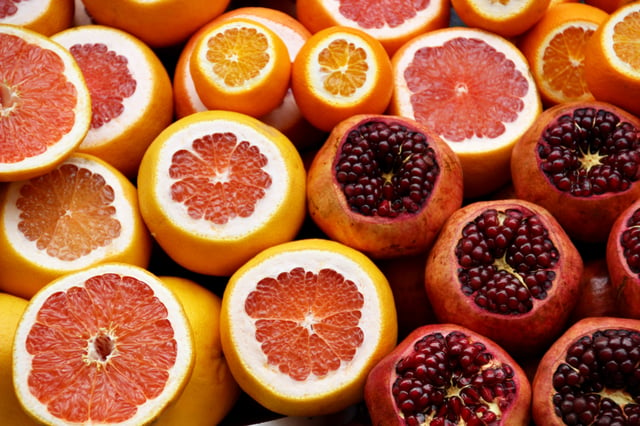
Photo by Israel Egío on Unsplash
Sources of Vitamin C include all citrus fruits--oranges, grapefruit, tangerines, and lemon. Lots of other foods offer benefits similar to oranges, with kiwi fruit being a Vitamin C powerhouse. Peaches, papayas, red and green peppers, tomatoes and strawberries are also high in C.
3. Vitamin E is a powerful antioxidant found in nuts, fortified cereals and sweet potatoes. Research suggests it protects cells in the eyes from unstable molecules called free radicals, which break down healthy tissue.
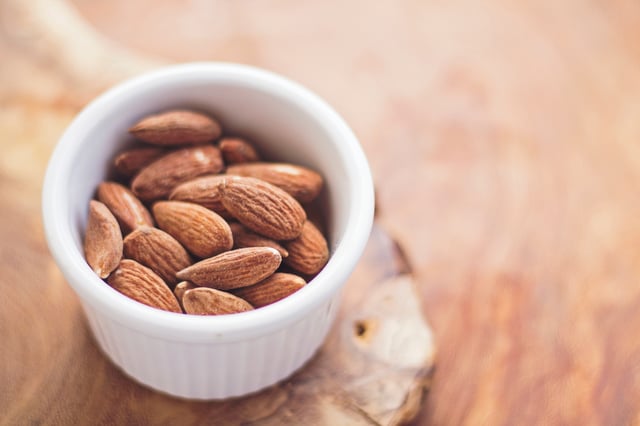
Photo by Juan José Valencia Antía on Unsplash
Many of us don’t get enough Vitamin E in our diets. Boost that by eating a small handful of sunflower seeds, or use a tablespoon of wheat germ oil in your salad dressing. Almonds, pecans, and vegetable oils are also good sources of Vitamin E.
4. Essential Fatty Acids: Fats are a necessary part of the human diet. They maintain the integrity of the nervous system, and boost the immune system. Research shows omega-3 fatty acids are important for proper visual development and retinal function. A 2010 study from Johns Hopkins found that people who had a diet high in omega-3 fatty acid were much less likely to develop AMD, and other studies suggest that diets rich in omega-3 fatty acid from cold-water fish like salmon, tuna, sardines and halibut reduce the risk of developing eye disease later in life.
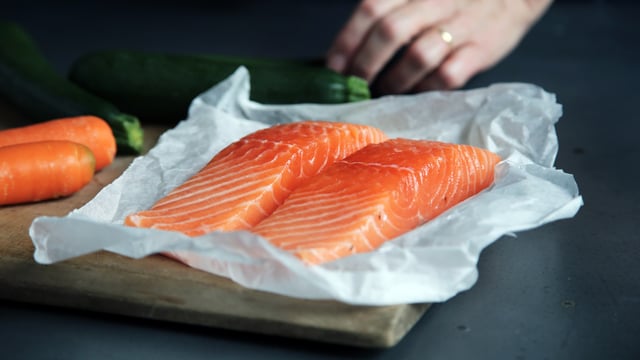
Photo by Caroline Attwood on Unsplash
5. Zinc is an essential trace mineral or "helper molecule." It plays a vital role in bringing vitamin A from the liver to the retina in order to produce melanin, a protective pigment in the eyes. Zinc may help protect your eyes from the damaging effects of light.
Legumes of all kinds, including black-eyed peas, kidney beans, lima beans, and peanuts contain zinc. Other foods high in zinc include oysters, lean red meat, poultry, and fortified cereals.
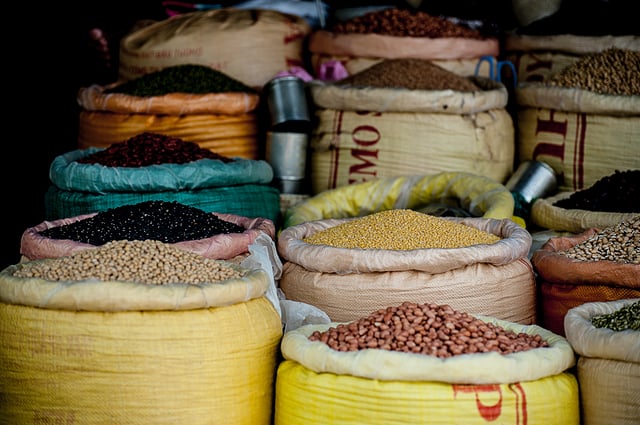
Photo by paul morris on Unsplash
6. Vitamin A. Vitamin A plays an important role in vision, bone growth and health of the immune system. Vitamin A also helps the surface of the eye, mucous membranes, and skin be effective barriers to bacteria and viruses, reducing the risk of eye infections.
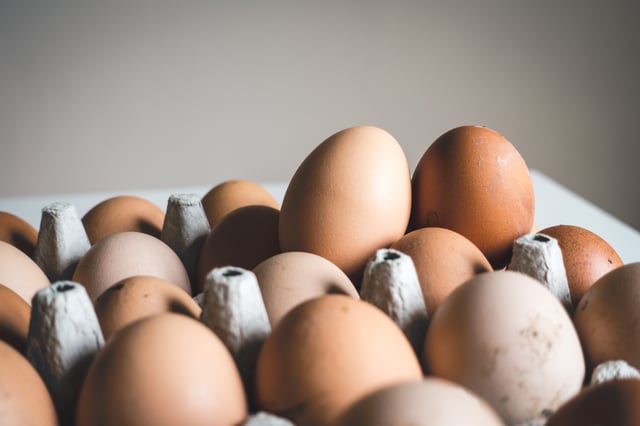
Photo by Jakub Kapusnak on Unsplash
Vitamin A can be found in eggs, carrots, sweet potato, kale, spinach, apricots, broccoli, butter, beef liver, and winter squash.
TOP EYE FOODS: THE RUNNERS-UP
Can you call them superfoods? We think so.
Carrots: Let’s give carrots their due respect: they’re high in beta-carotene, which helps with night vision, as are other orange-colored fruits and vegetables like sweet potatoes, apricots and cantaloupe. Making them a part of a colorful diet can help you keep your eyes healthy.
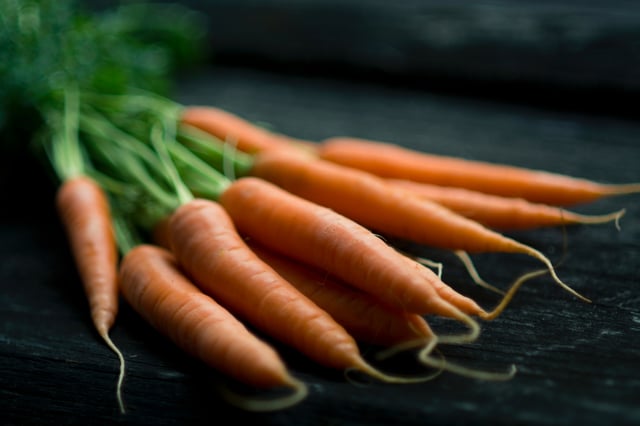
Photo by Jonathan Pielmayer on Unsplash
Chia seeds: Chia seeds contain more omega 3s than flax seeds or salmon, more calcium than a glass of milk, and more antioxidants than blueberries.
Blueberries: According to a study by Tufts University, blueberries may help to reduce your risk of cataracts, glaucoma, heart disease, cancer, and other conditions.
“Eat the Rainbow,” say nutritionists, and they’re absolutely right when it comes to eye health. Aim for 3 servings a week of the Top 6. Here’s a handy shortcut list to get you started (or keep you going.) Note: some nutrients contain more than one of the top 6, so that’s a nice bonus!
Lutein & Zeaxanthin: Broccoli, Brussels sprouts, collard greens, corn, eggs, kale, nectarines, oranges, papayas, romaine lettuce, spinach, squash.
Omega-3 Fatty Acids: Flaxseed, flaxseed oil, halibut, salmon, sardines, tuna, walnuts.
Vitamin A: Apricots, cantaloupe, carrots, mangos, red peppers, ricotta cheese, spinach, sweet potatoes.
Vitamin C: Broccoli, Brussels sprouts, grapefruit, kiwi, oranges, red peppers, strawberries.
Vitamin E: Almonds, broccoli, peanut butter, spinach, sunflower seeds, wheat germ,
Zinc: Chickpeas, oysters, pork chops, red meat, yogurt.
WHAT ABOUT SUPPLEMENTS?
In general, a multivitamin may be a good idea, but always check with your doctor before taking any supplements. Some can be dangerous in high doses, and others may interfere with medications you may be taking for certain conditions.
FOOD IS NOT ENOUGH: SCHEDULE YOUR ANNUAL EYE EXAM
And of course, in addition to eating for your eyes, you can protect the health of your eyes by getting an eye exam every year. Combining good nutrition with yearly checkups will increase your defense against serious health conditions.
Looking for some nutrient-rich ideas to jump-start your eye-healthy diet? Check out our blog, Not Sad-Desk Salads: 18 Delicious & Healthy Make-Ahead Lunches. And happy eating!
Sources:
https://www.aoa.org/patients-and-public/caring-for-your-vision/diet-and-nutrition
https://www.webmd.com/healthy-aging/features/foods-eye-health#2
https://www.vsp.com/eating-healthy.html
https://www.aao.org/eye-health/news/four-fantastic-foods
http://www.allaboutvision.com/nutrition/foods.htm
https://www.health.harvard.edu/staying-healthy/top-foods-to-help-protect-your-vision
http://www.allaboutvision.com/nutrition/vitamin_a.htm
https://draxe.com/top-10-vitamin-foods/


